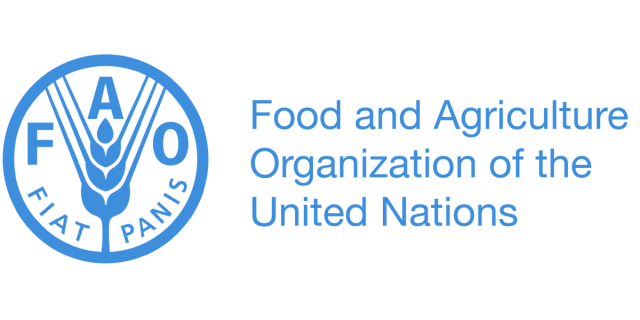
Governments from two critical regions, Central America’s Dry Corridor and Africa’s Sahel, presented dozens of projects aimed at boosting agricultural production and food security in a sustainable and profitable way at the Hand-in-Hand Investment Forum 2023
Participating governments met with traditional donors, multilateral development banks and representatives of the private sector and foundations at the national government-led event, organized by the Food and Agriculture Organization of the United Nations ( FAO) and held during the World Food Forum (17-20 October)
While some 31 countries pitched national-priority investable projects in agrifood systems, all of them benefiting from FAO’s specialized technical analysis and investments expertise, considerable attention was given to two regional initiatives involving multiple countries facing similar challenges. The two initiatives generated more than $6 billion in pitches, for around 110 investments and affecting 149 million beneficiaries, ranging from small-scale irrigation networks and water storage facilities to digital soil mapping and measures to boost regional trade.
The Hand-in-Hand Initiative is a country-owned and country-led process and FAO contributes specialized technical support, including through its cutting-edge Geospatial Platform that can help identify areas with underutilized agricultural potential and high socio-economic impact, said Director-General QU Dongyu.
Central to the Initiative’s approach is partnerships and the unique matchmaking in investments and derisking of agrifood value chains for the vulnerable that have left people in these regions behind, opening the way for international financial organizations, private sector actors and philanthropic foundations to support sustainable agrifood systems transformation. “Without investment there is no future,” Qu said.
The Dry Corridor and Sahel both face shared issues, especially drought and inadequate management of water resources that trigger conflicts and forced migration, so crafting joint solutions can make it easier to help Members attract partners and investors. “We believe we can come with a holistic approach complementing existing initiatives but at the same time prioritizing investments which are common across each of the two regional initiatives that will allow them to move out of the critical situation they are in” said Maximo Torero, Chief Economist of FAO.
Dry Corridor
“We are entering the Anthropocene era, and people need help confronting climate change,” said Felix Ulloa, Vice President of El Salvador.
For the Dry Corridor region that is home to more than 11 million people and stretches from Chiapas, Mexico to Panama, a key imperative is to improve lives and mitigate outmigration, Ulloa said. “We need to turn it into a land of opportunities.”
Investment pitches presented during the Forum include the reduction of crop losses and improved access to credit; digital soil mapping that can save farmers considerable money and labor by optimizing soil nutrient management; fostering 80 digital ecosystems linking tens of thousands of producers to rural businesses and cooperatives; a comprehensive improvement of water management and irrigation systems in the regions, including the building of water storage systems that can help local farmers shift to more value-added crops and increase their incomes and a database that classifies agricultural risks according to climate, soil and crop characteristics that can benefit producers.
$311 million in investments were presented with anticipated rates of return well above 20 percent and almost 2.5 million beneficiaries. Details are available here.
The Dry Corridor Initiative benefits enormously from the strong leadership of the Central American Integration System (SICA) and other regional bodies that have made reducing poverty and improving food security the anchor of regional development policies. The region’s major development banks were active participants throughout the Hand in Hand Investment Forum and engaged strongly with participating governments.
Sahel
The Sahel, stretching from the Atlantic to the Red Sea and home to more than 400 million people, is also, despite often grim news, “a land of opportunity,” said Abdoulaly Mohamadou, Executive Secretary of the Permanent Interstates Committee for Drought Control in the Sahel (CILSS), in a comprehensive pitch during which he emphasized the ample groundwater resources the desert zone in fact possesses. “Very often regions that are considered poor have considerable potential,” he said.
Governments from five countries outlined their commitments in the area and – notably given some recent government changes in the region –rallied around the idea of keeping cross-border Sahelian institutions together to tackle common challenges ranging from poverty and insecurity, farmer-herder conflicts and drought.
“Water in our region is a challenge, and we must transform it into an opportunity,” said Gabriel Mbairobe, Cameroon’s Minister for Agriculture and Rural Development.
Targeted investments presented focus on high-poverty zones and include a major effort to introduce solar-powered pumps and sharply increase the amount of irrigated cropland in the Sahel using improved water capture and storage in addition to shallow wells.
Other key investment areas include reducing cross-border trade restrictions and barriers and working together to establish robust plans for improved availability and local generation of livestock forage and feed, a major source of conflict in the area. All told around $6 billion in projects were presented, with internal rates of return of more than 20 percent. Details available here.
Participating governments agreed that their countries had the potential to feed themselves, with Burkina Faso underscoring ambitious plans to end rice and maize imports in the near future. Lassine Debele, Mali’s Minister for Agriculture, emphasized that investments in the region were welcome and that it was critical to make sure that they catalyzed job creation for Malians. Guinea’s focused efforts to improve its business environment were outlined, with an explicit recognition that the most relevant private sector was the country’s own local firms, which should be helped to thrive and grow.
“We are all working towards the same goal,” said FAO Deputy Director-General Maria Helena Semedo, who praised the countries for having made exceptional progress on their investment plans in the past 12 months. “Yes, the Sahel is a land of opportunities and more importantly, it is a resilience laboratory for the world to learn from,” she added.
Distributed by APO Group on behalf of Food and Agriculture Organization (FAO).

